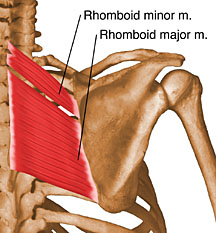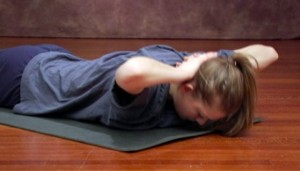Weak Rhomboids: Muscles of the Upper Back
Weak rhomboids are a big problem in the modern world.
Weak rhomboids, along with tight pectoralis minors, are the likely reason for the round-shouldered posture that bedevils so many people.
Weak rhomboids can also be very difficult to strengthen.
There are two rhomboid muscles, the rhomboid major and the rhomboid minor.
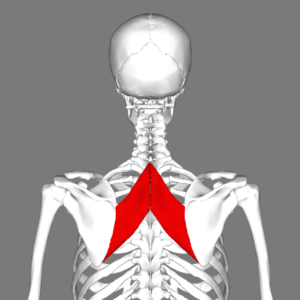
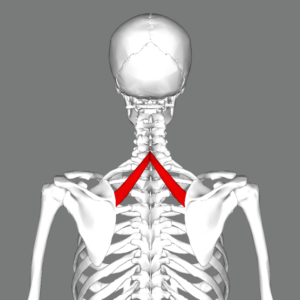
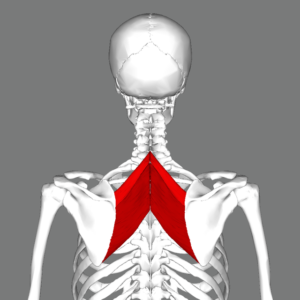
The rhomboid major connects from the medial (inner) border of the scapula, or shoulder blade, to the thoracic, or middle, spine (T2-T5).
Rhomboid minor connects the upper medial border of the scapula and the bottom of the cervical spine and top of the thoracic (C7/T1).
The job of the rhomboids is to stabilize the shoulder blade on the ribcage.
It does this with the balanced action of the serratus anterior, pectoralis minor, and lower trapezius.
Rhomboids, as the two exercises in this post show, can move the shoulder blade toward the spine. But that action should always be balanced by the serratus anterior pulling in the opposite direction.
The exercise in the picture is meant to try and isolate the rhomboid major in an attempt to strengthen it.
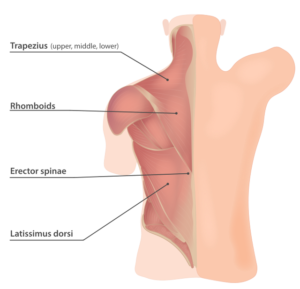
In the video below, the exercise- which I love putting up because of my co-stars—displays the balanced action of the rhomboids and serratus anterior muscles.
Both of these muscles can be hard to access and develop.
Last week I posted a video of Bonnie Bainbridge Cohen talking about scapula rotation which showed a beautifully integrated way to move the shoulder blades.
Weak rhomboids often prevent this type of movement.
When trying to get students or clients to improve weak rhomboids, I usually ask them to work on the exercise above (instructions are below).
In that exercise, we can ideally learn to engage the lower rhomboid major by drawing the bottom tips of the shoulder blades towards the spine.
People with weak rhomboids tend to move from the top of the shoulder blade by default due to a tight and often overactive pectoralis minor.
Solving the riddle of weak rhomboids and cultivating balance muscle tone in the shoulder girdle can help you change your body for the better, forever.
Shalabhasana Variation- Fingers Behind The Head
- Lie on your stomach. Interlace your fingers behind your head and lengthen the back of your neck pressing up into your fingers.
- Slowly draw the belly in and lift your trunk up off the floor a few inches, keeping your throat soft. The head, neck and chest want to elevate in one piece.
- It doesn’t matter how high the trunk lifts off of the floor but it is essential that the back muscles lengthen instead of shorten.
- Lift the elbows up and out as you lift up. Try to keep the elbows at the high of the head of higher.
- If the shoulders are tight you can separate the hands allowing the fingertips to touch.
- Try drawing the bottom tips of the shoulder blades towards each other and hold for 5-10 breaths.
Forearm Plank With Spinal Dips
Walking and posture patterns factor into problems with the upper back in ways that most people don’t realize.

